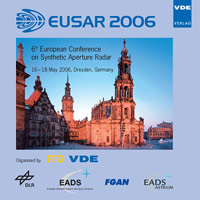Analysis of Geometry Resolution Characteristics of Formation flying Satellites Bistatic SAR
Conference: EUSAR 2006 - 6th European Conference on Synthetic Aperture Radar
05/16/2006 - 05/18/2006 at Dresden, Germany
Proceedings: EUSAR 2006
Pages: 4Language: englishTyp: PDF
Personal VDE Members are entitled to a 10% discount on this title
Authors:
Yan, Honghui; Wang, Yanfei; Yu, Hui; Zhang, Bingchen (Institute of Electronics, Chinese Academy of Sciences, P.O.BOX 2702, Beijing 100080, P. R. China)
Abstract:
In evaluating the performance of formation flying satellites SAR systems, it is important to determine the required resolutions. Formation flying satellites SAR uses separated transmitters and receivers flying on different platforms, it can be regarded as bi-/multi-static SAR and its imaging geometry differs from that of traditional monostatic SAR systems. Based on this, in this paper, the geometry resolution of formation flying satellites bistatic SAR is analyzed using the concept of gradient. The formulas of resolution characteristics, such as geometry resolution, the direction of resolution vector and the area of resolution cell, are deduced in the form of look angle and squint angle’s functions. In addition, the influence of satellite’s baselines on the geometry resolution is also discussed, and the simulated results are also provided here.


